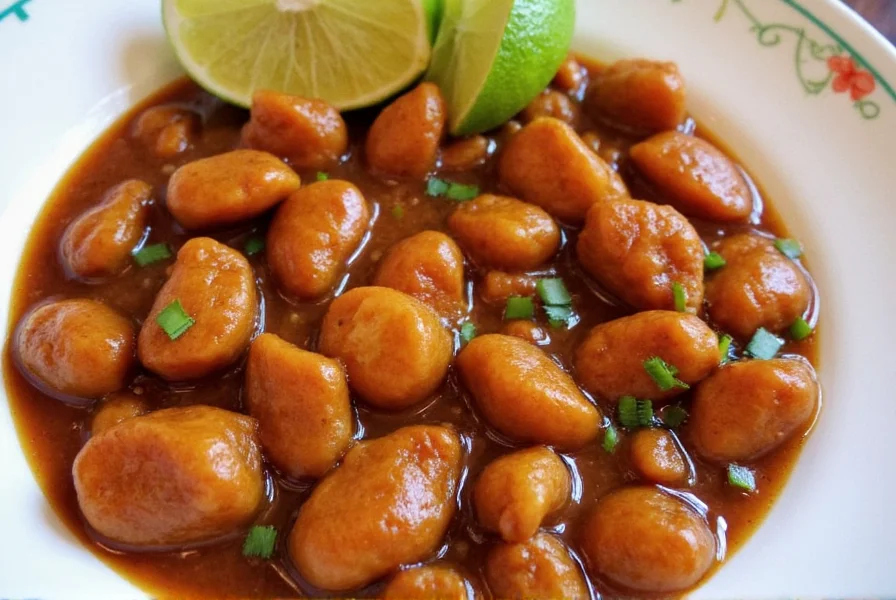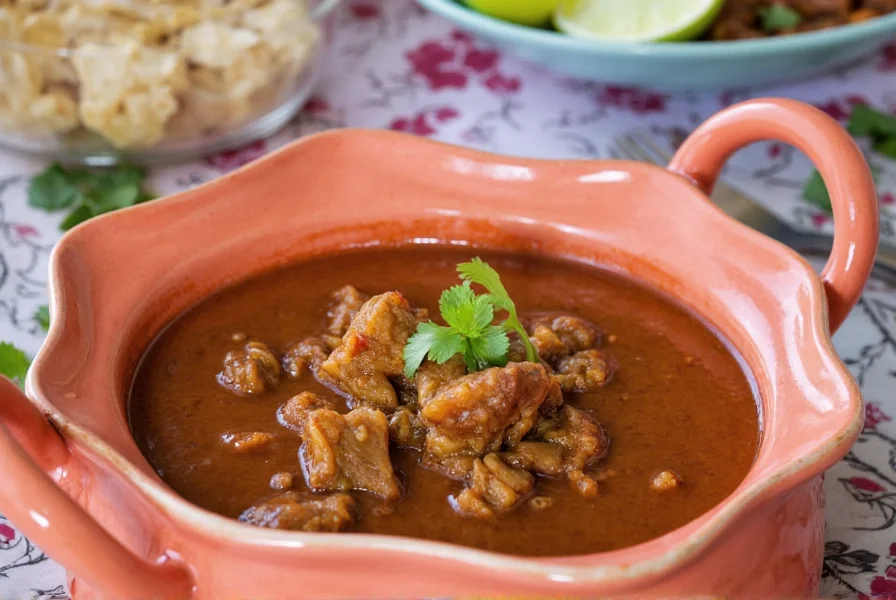Spice Up Your Life: The Smoky, Tangy Magic of Mexican Adobo Sauce!
Whether you're a seasoned home cook or just starting to explore the vibrant world of global spices, one thing’s for sure—you need to get familiar with Mexican adobo sauce. This rich, smoky, slightly tangy sauce is a flavor powerhouse packed with chili pepper depth, garlic, vinegar, and a hint of sweetness. It's not just a condiment—it's a culinary passport to Mexico’s deep-rooted spice traditions.
Table of Contents
- A Brief History of Mexican Adobo Sauce
- What Makes Adobo Sauce So Flavorful?
- 5 Creative Ways to Use Adobo Sauce in Your Kitchen
- Buying Guide: Top Adobo Sauces You Can’t Miss
- How to Make Your Own Homemade Adobo Sauce
- Store-Bought vs. Homemade Adobo: Which Wins?
- Adobo Sauce in Global Spice Traditions
- Final Thoughts: Is Adobo Sauce Worth the Hype?
A Brief History of Mexican Adobo Sauce
The word “adobo” comes from the Spanish verb adobar, meaning “to marinate.” But long before the Spaniards arrived in Mexico, indigenous communities were using similar preservation techniques to enhance flavor and preserve meats using local ingredients like chili peppers, herbs, and vinegar.
In modern times, especially in central and southern Mexico, adobo became a signature blend used to marinate everything from chicken to pork. Each region developed its own version, often involving a mix of dried chilies like ancho, guajillo, and pasilla, along with spices such as cumin, oregano, and cloves.

Today, bottled adobo sauce is a staple in many kitchens, both professional and home-based, thanks to its versatility and bold flavor profile. Whether you’re making tacos, enchiladas, or even adding a kick to burgers and sandwiches, this sauce has got your back.
What Makes Adobo Sauce So Flavorful?
At first glance, adobo sauce might look like any other red chili sauce. But take a taste, and you’ll be hit with layers of flavor that go far beyond simple heat:
- Smoky depth from dried chilies like chipotle or morita.
- Tangy acidity from vinegar or citrus juice.
- Sweetness from tomatoes, garlic, or sometimes a touch of sugar.
- Herbaceous notes like oregano, thyme, or cloves.
- Umami richness from slow cooking and blending.
It’s this unique balance of sweet, sour, spicy, and smoky that makes adobo sauce so incredibly versatile—and addictive.
5 Creative Ways to Use Adobo Sauce in Your Kitchen
You don’t have to stick to traditional uses when it comes to adobo sauce. Let’s break the mold and explore five fun and flavorful ways to incorporate it into your meals:
- Make Spicy Popcorn: Add a dash of adobo sauce to melted butter and drizzle over freshly popped corn for a smoky, spicy snack.
- Dip for Fries: Mix adobo sauce with mayonnaise or sour cream for a creamy, spicy dip perfect for fries, wedges, or veggie sticks.
- Marinade for Grilled Meats: Brush it onto chicken, steak, or shrimp before grilling for an instant flavor boost.
- Pizza Drizzle: After baking, drizzle some adobo over your favorite pizza for a smoky, tangy finish.
- Cocktail Enhancer: Yes, really! Add a few drops to Bloody Marys or Micheladas for a savory-spicy twist.
Buying Guide: Top Adobo Sauces You Can’t Miss
Not all adobo sauces are created equal. Here’s a quick guide to help you choose the best one based on flavor, texture, availability, and use cases:
| Brand | Flavor Profile | Heat Level | Best For | Price Range |
|---|---|---|---|---|
| Vascoyo | Smoky, earthy, balanced | Mild to Medium | Marinating chicken or tofu | $$ |
| La Costeña | Spicy, tomato-forward, slightly sweet | Medium to Hot | Enchiladas, tacos, and burritos | $ |
| Don Eladio | Deeply smoky, robust | Hot | Slow-cooked meats, stews | $$ |
| Ranchero | Fruity, bright, slightly tangy | Mild | Vegetable dishes, soups | $ |
| El Yaqueño | Complex, herbal, with clove notes | Medium | International fusion dishes | $$$ |
These sauces vary in texture and consistency too—from smooth purées to chunkier pastes. If you prefer a smoother finish, opt for finely blended options like La Costeña or Vascoyo. For a rustic bite, try Don Eladio or El Yaqueño.
How to Make Your Own Homemade Adobo Sauce
If you're feeling adventurous (and love full control over your spice levels), here’s a basic recipe to make homemade adobo sauce:
Ingredients
- 4 dried ancho chilies
- 2 dried guajillo chilies
- 1 cup water or chicken broth
- 2 garlic cloves
- 1 small tomato, roasted
- 1 tsp dried oregano
- 1/2 tsp ground cumin
- 1/4 tsp cloves
- 1 tbsp apple cider vinegar
- Salt to taste
Instructions
- Toast the dried chilies in a dry skillet until fragrant but not burnt.
- Soak them in warm water for 20 minutes until softened.
- Drain and add to a blender with all other ingredients.
- Blend until smooth, adding liquid as needed to reach your desired consistency.
- Strain if desired, or keep it rustic!
This batch can be stored in the fridge for up to 2 weeks or frozen in ice cube trays for easy portioning. Customize it by adding more heat, swapping out herbs, or experimenting with fruitiness (like mango or tamarind) for a unique twist.
Store-Bought vs. Homemade Adobo: Which Wins?
Both store-bought and homemade versions have their pros and cons. Let’s compare:
| Aspect | Store-Bought | Homemade |
|---|---|---|
| Convenience | Instant, no prep time | Requires time and ingredients |
| Flavor Control | Fixed flavor profile | Highly customizable |
| Shelf Life | Lasts months unopened | 2–3 weeks refrigerated |
| Cost | Affordable ($–$$) | Varies depending on ingredients |
| Authenticity | Mass-produced | Can be very traditional |
If convenience is key, store-bought is your best bet. But for true flavor lovers who enjoy experimenting, nothing beats a fresh, homemade batch tailored to your preferences.

Adobo Sauce in Global Spice Traditions
Though deeply rooted in Mexican cuisine, the concept of adobo-style marinades has influenced culinary practices around the globe. In the Philippines, for instance, adobo refers to a method of braising meat in vinegar and soy sauce. In the Caribbean, similar marinades are used for jerk seasoning and barbecue preparations.
What connects these traditions is the universal desire to preserve, season, and enhance flavor through bold spice combinations. Mexican adobo stands out for its focus on smoked chilies and herbaceous complexity, making it one of the most globally admired flavor profiles today.
Final Thoughts: Is Adobo Sauce Worth the Hype?
Absolutely! Whether you’re spicing up your weekly meal prep or exploring the depths of Mexican culinary traditions, adobo sauce is a must-have ingredient in your pantry. From store-bought convenience to the satisfaction of crafting your own, there’s no wrong way to enjoy this iconic sauce.
Remember, the best adobo sauce is the one that suits your taste and fits your lifestyle. So, whether you pour it over grilled meats, stir it into soups, or drizzle it on eggs, embrace the magic of Mexican adobo and let it transform your everyday meals into something truly unforgettable.

Now go ahead—grab that bottle, open your mind to new flavors, and start cooking like a real flavor alchemist!










 浙公网安备
33010002000092号
浙公网安备
33010002000092号 浙B2-20120091-4
浙B2-20120091-4